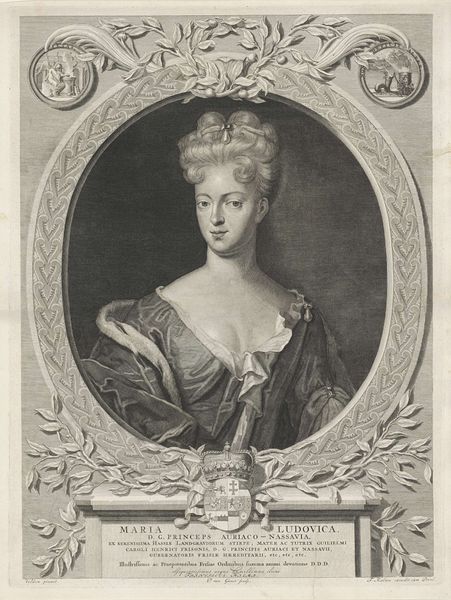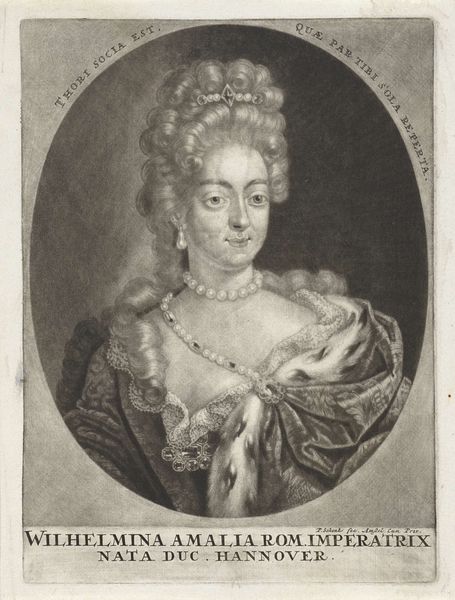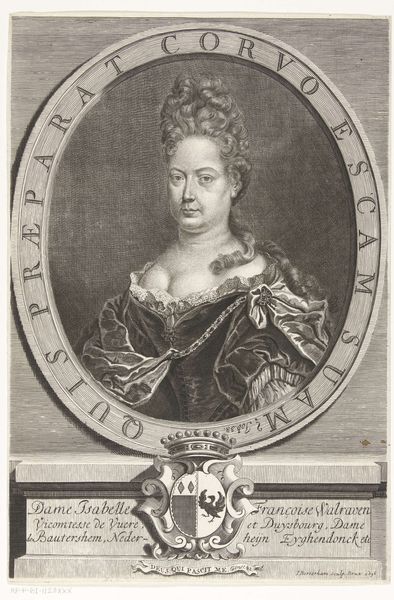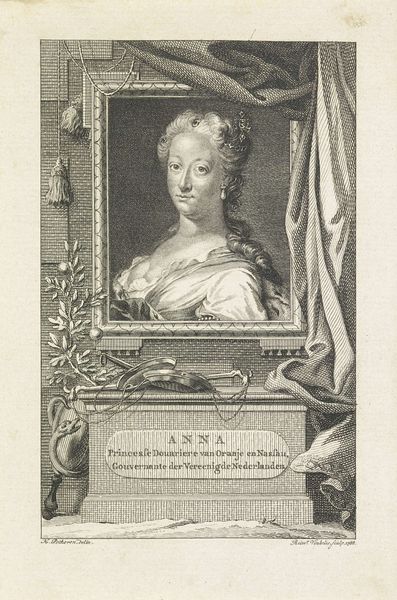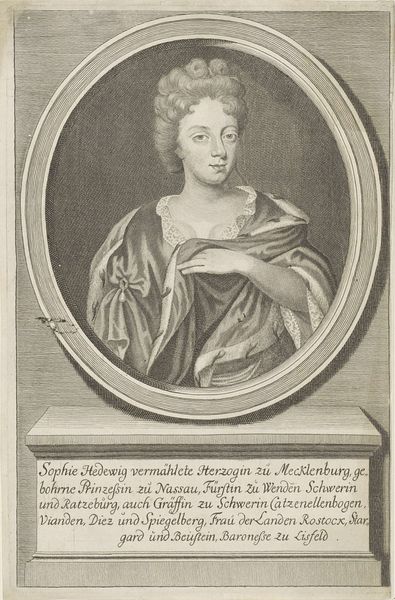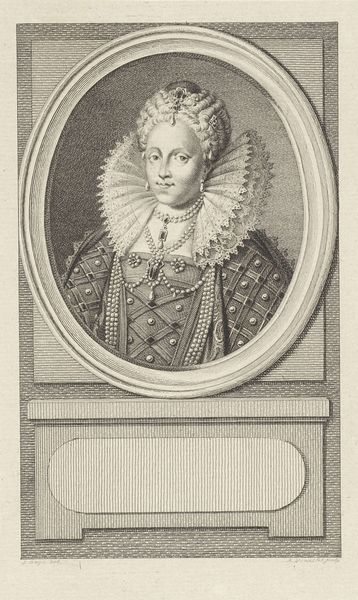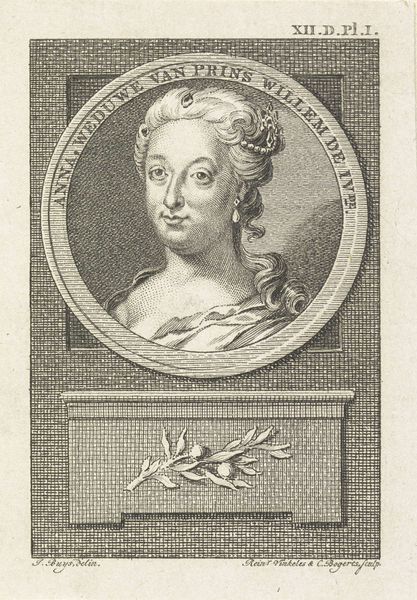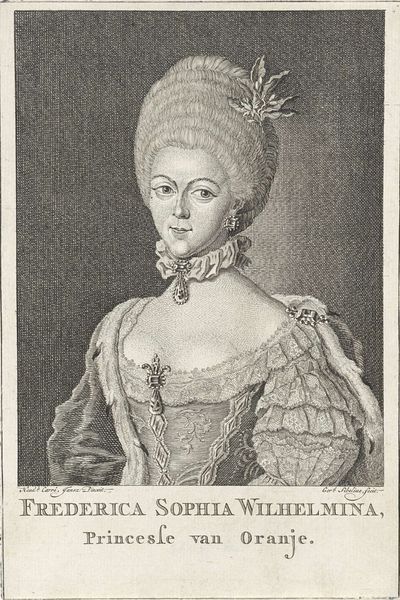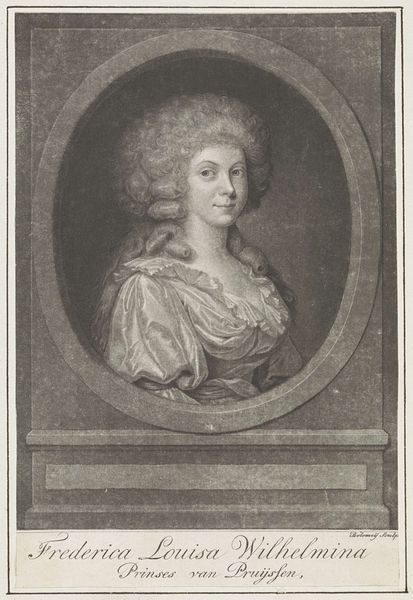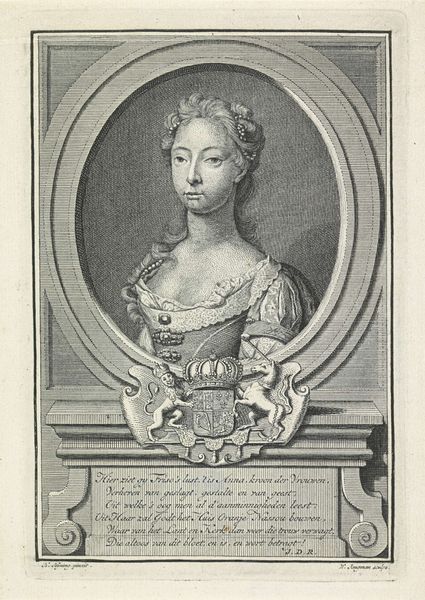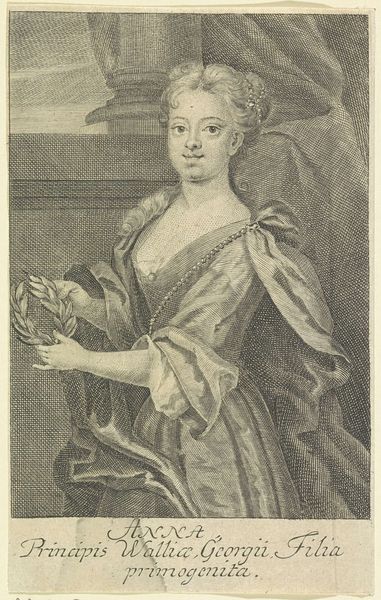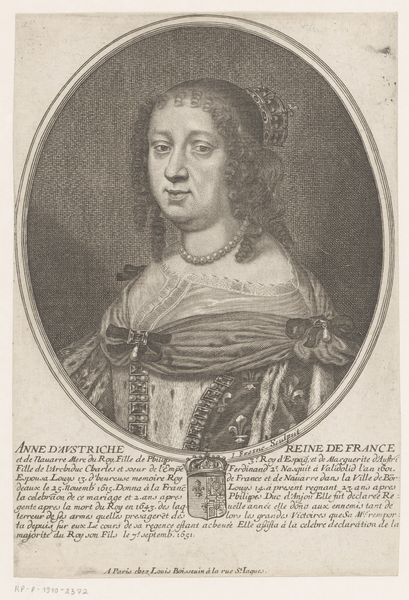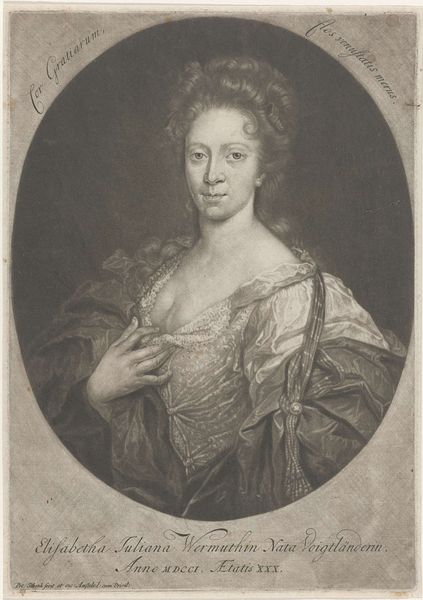
Dimensions: height 172 mm, width 115 mm
Copyright: Rijks Museum: Open Domain
Curator: Here we have a captivating portrait, "Portret van Juliana Cornelia de Lannoy," crafted between 1778 and 1780 by Jacob Houbraken. This elegant piece is an engraving. Editor: The immediate impression is one of restrained opulence; it has a strange quality being Baroque rendered with a very constrained palette. The oval frame within the rectangular print isolates her, elevating the subject, yes? Curator: Indeed. The formal composition emphasizes structure. Notice how the artist balances the textured background against the smooth oval of her face and the geometric forms in her hair. The composition is quite precise. Editor: Beyond composition, there’s the clear symbolic language. Consider her hairstyle—a towering edifice signifying status and refined taste. It reflects the late 18th-century obsession with elevated presentation. What statements can we draw about the ideals of women from these features, one wonders. Curator: From a structural perspective, her gaze creates an interesting dynamic; she looks to her right, off the frame, drawing our eye away but ultimately anchoring it to the symmetry of the print's structure. The delicate lines of the engraving create contrast in the figure's appearance against the heavily geometric frame elements, thus lending it significance through contrast. Editor: Yes, and I'd also emphasize the jewelry, the pearl necklace hinting at purity and wealth—but notice, too, how those pearls are juxtaposed against the strong angles of her face, almost to hint at the burden of expectation upon her, or perhaps her active subversion of these expectations. The shawl almost carelessly tossed over her shoulders presents her with more accessibility, even though she remains stoic and aloof. Curator: Agreed, we can trace through her material choices to consider both historical and cultural contexts in the rendering. It is through structural observation that these qualities emerge. Editor: Precisely. By decoding the symbols, we gain a deeper insight into the sitter’s social standing and the era's ideals—a fascinating glimpse into cultural memory. Curator: It underscores how attention to detail enriches one's overall interpretive scope, expanding beyond formalism to bridge history and technique. Editor: An invitation to delve deeper and question inherited meanings in familiar forms.
Comments
No comments
Be the first to comment and join the conversation on the ultimate creative platform.
